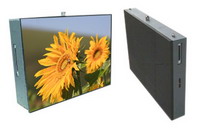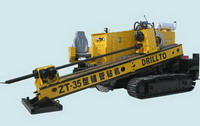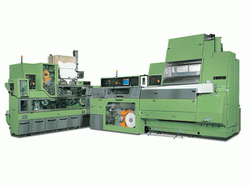

 As the member of the Smartscan group of companies we are a notified body for the machinery directive. The notified body number is 1674.
 Machinery Safety is what we care about. As specialists and experts in the sage design and manufacture of machines we have a world-recognised ability to add value to our customers.
 Our team of experts has unsurpassed experience in control systems design and testing and has years of experience in writing and evaluating European and international standards.
|
New edition of ISO/IEC 17025:2005 summery introduction
After four years of discussion, the ISO (Internatioal Organization for Standardization)published a new edition of ISO/IEC 17025 on May 12, 2005.This International Standard is currently used by accreditation bodies, regulatory authorities, and laboratories around the world to evaluate the competence of testing and calibration laboratories, and plays a vital role in trade, in product development and manufacturing, and in protection of the consumer.
With reference to the 1999 edition of ISO/IEC 17025, the major changes in the 2005 edition of ISO/IEC 17025 are in section 4, which pertains to management requirements, since the purpose of this revision is alignment with ISO 9001:2000. ILAC has already set a transition period of two years from date of publication of the new edition for accredited laboratories to establish compliance. This means that all accredited laboratories shall implement the new standard before May 11, 2007.This article outlines the major changes found in the 2005 edition, for reference. Changes in scopeand terminology Regarding the scope, clause 1.6 in the 1999 edition stated that laboratories complying with ISO/IEC 17025 must "also meet the requirements of ISO 9001: 1994" has been changed to state that laboratories that comply with ISO/IEC 17025 must meet the "principles of ISO 9001:2000" In addition, throughout the Standard the terms "quality system," "client," and "conformance" have been changed to "management system," "customer," and "conformity," respectively. Changes to management requirements The changes in management requirements reflect the content of ISO 9001:2000, especially in the placement of greater emphasis on the responsibilities of senior management personnel, on the need to demonstrate a commitment to continually improving the effectiveness of an enterprise's management system, on customer satisfaction, and on internal and customer communication concerning the management system. The major changes are summarized as follows: ·In clause 4.1.5 a new item, "k", has been added to the list, stating: "The laboratory shall ensure that its personnel are aware of the relevance and importance of their activities and how they contribute to the achievement of the objectives of the management system." ·Clause 4.1.6 is a new clause and states: "Top management shall ensure that appropriate communication processes are established within the laboratory and that communication takes place regarding the effectiveness of the management system." ·In clause 4.2 the term "quality system" has been replaced by "management system," and an added statement in clause 4.2.2 (e) requires that there must be a demonstrated commitment to continually improving the effectiveness of the management system. ·Clause 4.2.3 has been added to require that top management provide evidence of commitment to the development and implementation of the firm’s management system and continually seek to improve its effectiveness. ·Clause 4.2.4 is a new clause and requires senior management to communicate to the organization the importance of meeting customer as well as statutory and regulatory requirements. ·Clause 4.2.7 is also a new clause and states: "Top management shall ensure that the integrity of the management system is maintained when changes to the management system are planned and implemented." ·Clause 4.7.2 is a new clause and states: "The laboratory shall seek feedback, both positive and negative, from its direct customers.The feedback should be used and analyzed to improve the management system, testing and calibration activities and customer service." ·Another new clause, 4.10 Improvement, has also been inserted. This clause states: "The laboratory shall continually improve the effectiveness of its management system through the use of the quality policy, quality objectives, audit results, analysis of data, corrective and preventive actions and management review." ·In Clause 4.15 Management reviews, the list of matters to be covered in management review has been expanded to include "recommendations for improvement" as required by new clause 4.10 Improvement.Furthermore, in Clause 4.2.2 a new statement states: the overall objectives shall be reviewed during management review. Changes to technical requirements There are no essential changes to the technical requirements.Only two new requirements are found, within Clause 5.2 Personnel and Clause 5.9 Assuring the quality of test and calibration results. Clause 5.2.2 requires that "the effectiveness of the training actions taken shall be evaluated." Clause 5.9 has been expanded with the addition of two subclauses. The new clause 5.9.2 requires "Quality control data shall be analysed and, where they are found to be outside pre-defined criteria, planned action shall be taken to correct the problem and to prevent incorrect results from being reported." Conclusions The new edition only includes the minimum changes to ISO/IEC 17025 that were necessary to ensure that 17025 and ISO 9001:2000 are compatible. There are no essential changes in the technical requirements. The major new management requirements are continual improvement of the management system, internal communication regarding the management system, and communications with the customer. It can be concluded that laboratories that already manage their operations with reference to the 1999 edition of ISO/IEC 17025 will merely have to implement minor readjustments in terms of new management requirements so as to meet ISO/IEC 17025: 2005. |
|
|||||||||||||||||||||||||||||||||||||||||||||||||||||||||||||||||||||||||||||||||||||||||||||||||||||||||||||||||||||
|
||
|







